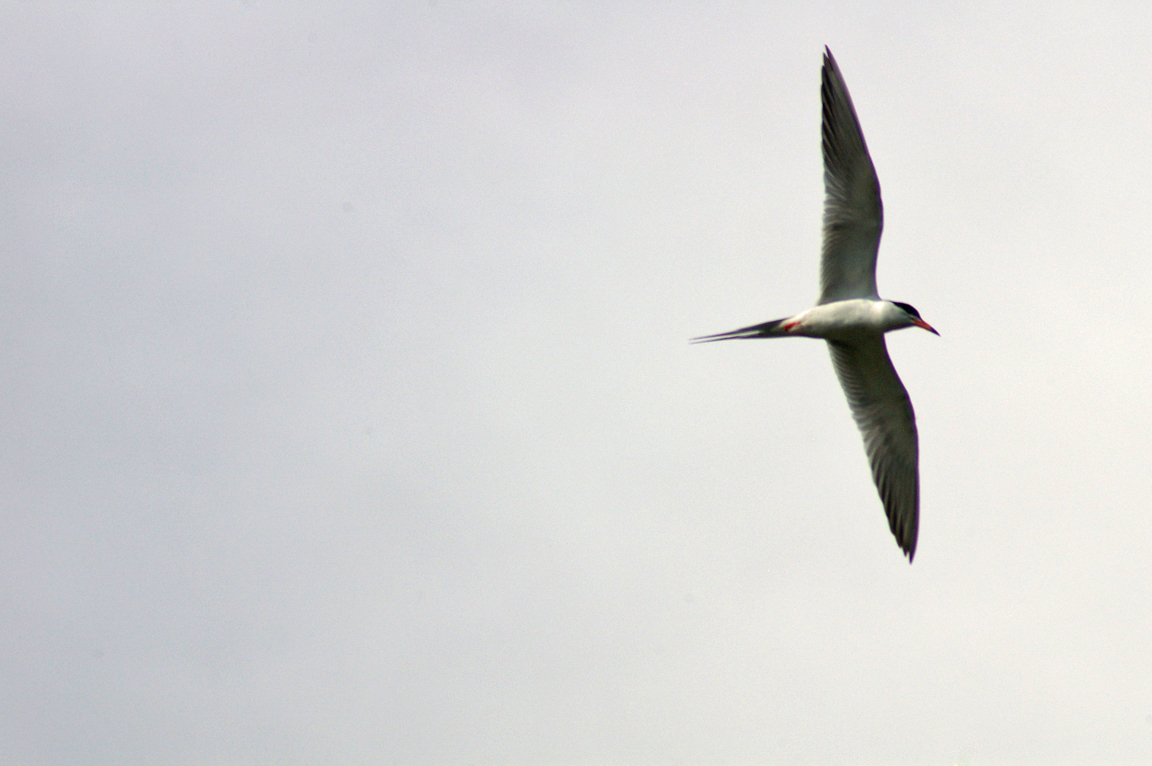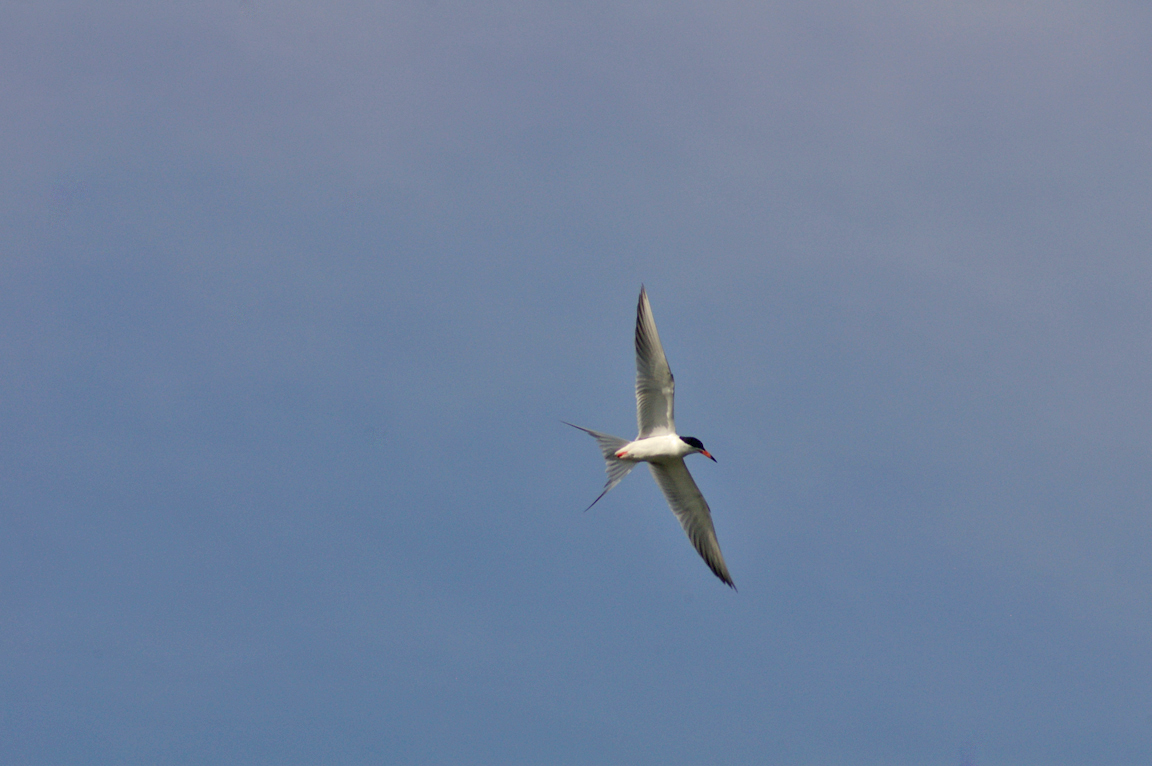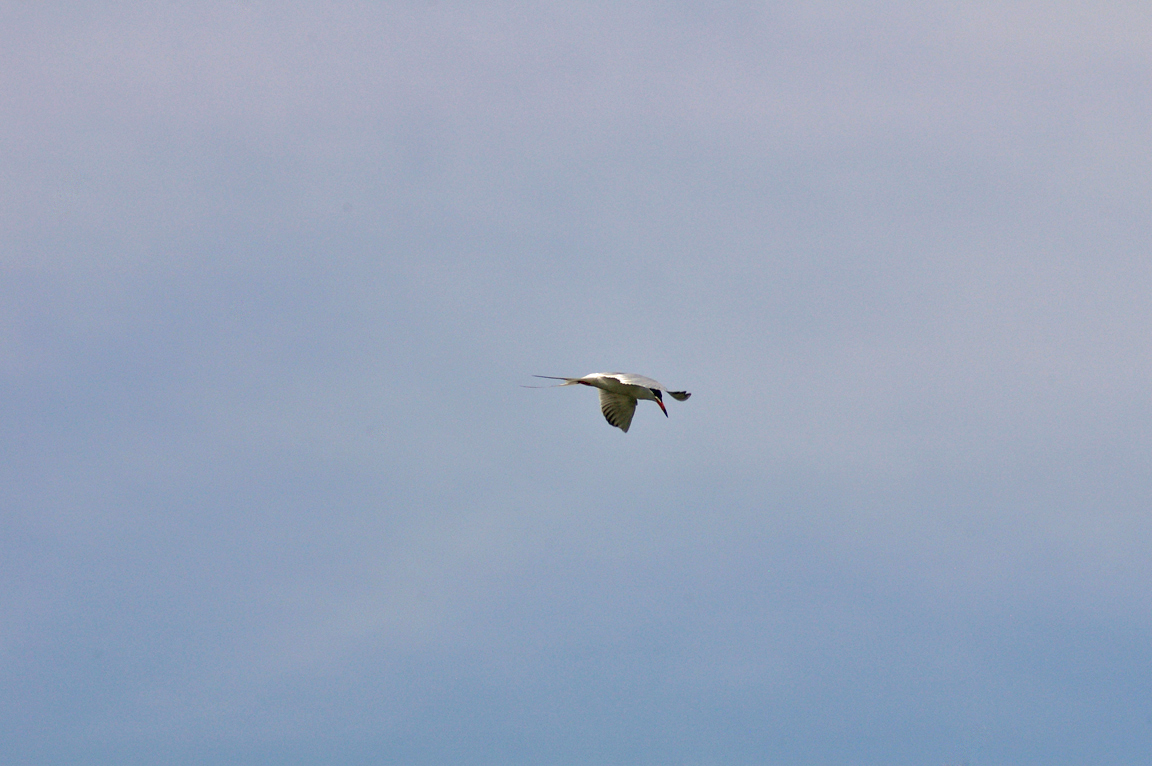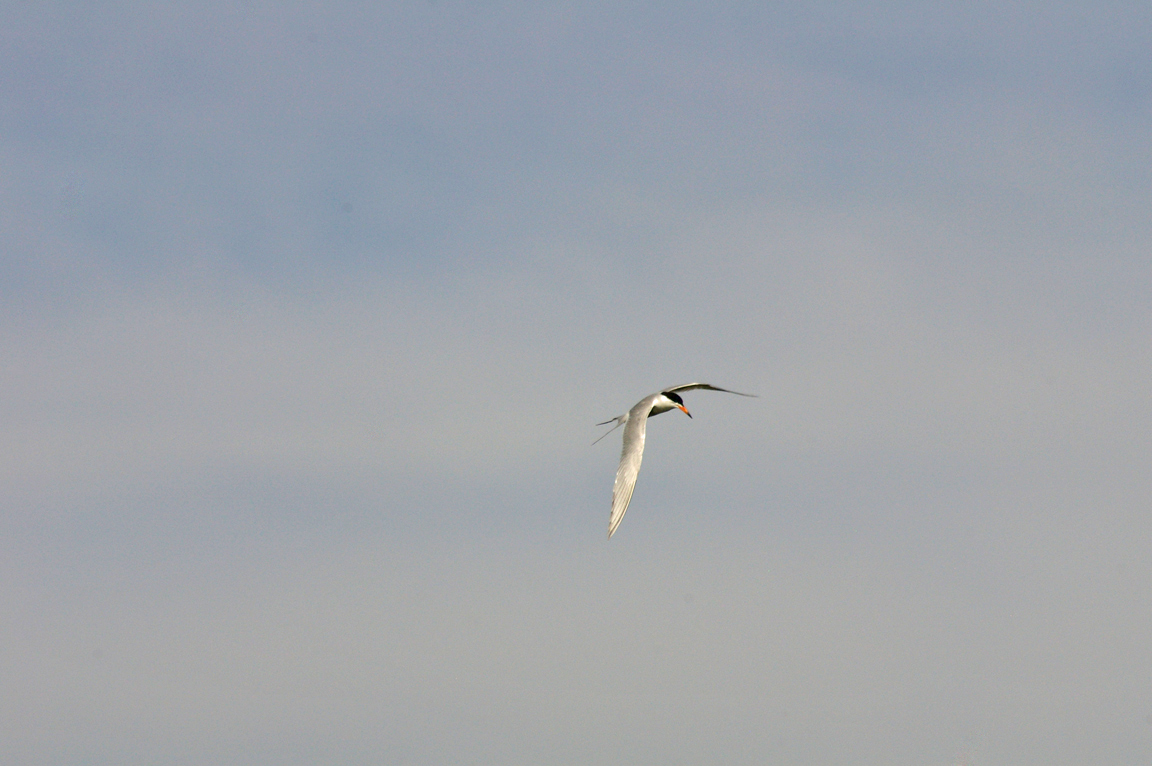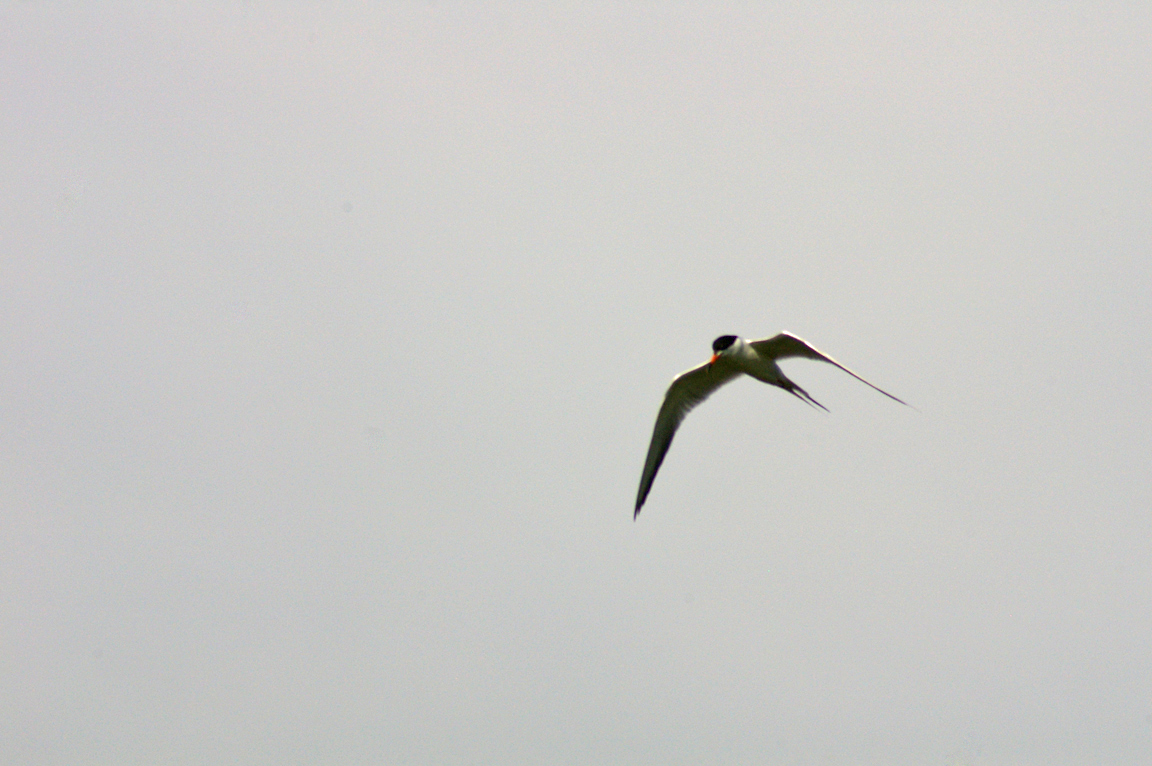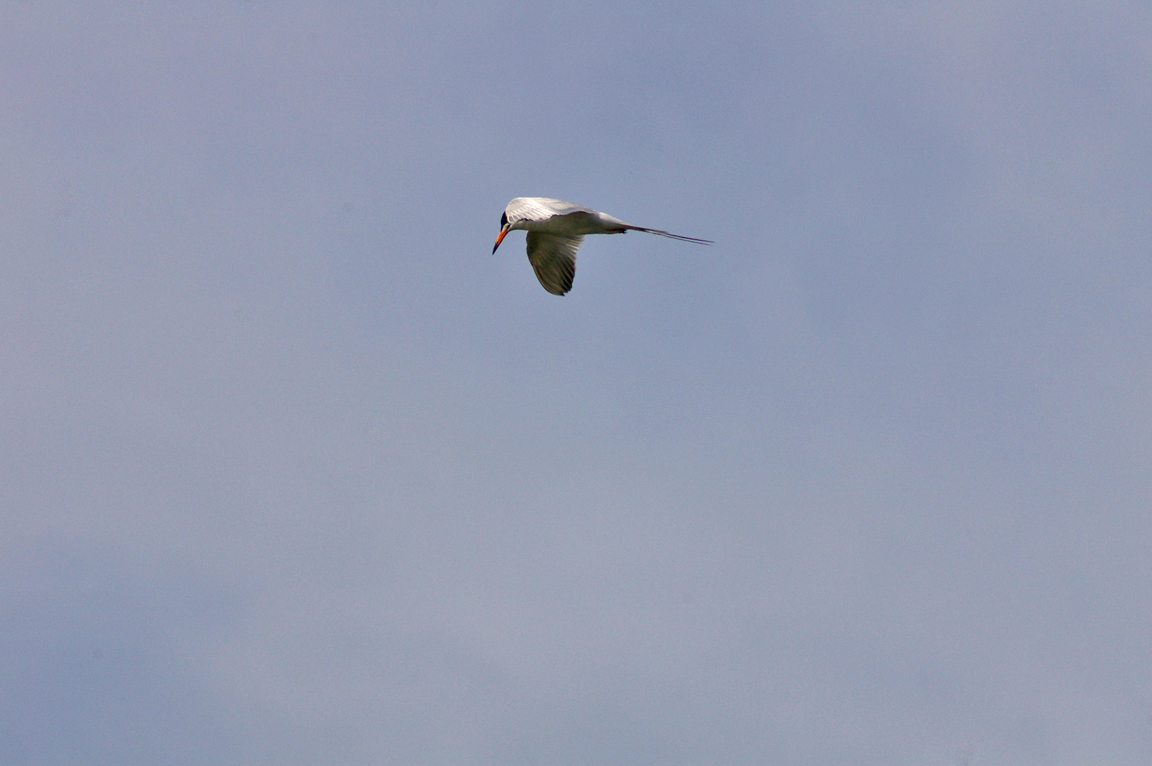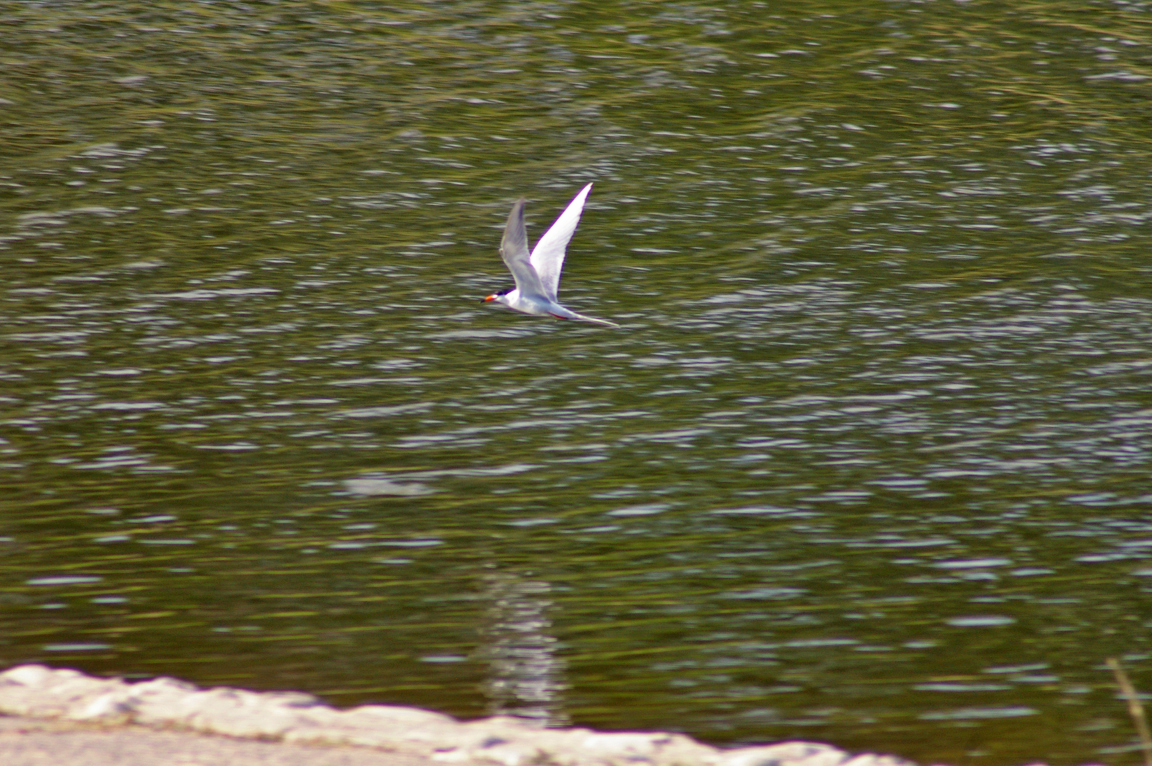|
|
|
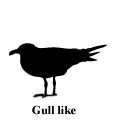 |
Forster's Tern
|
| Sterna forsteri | |
One of several medium-sized terns that appear similar in appearance, the Forster's Tern breeds primarily in marshes and winters along the coasts. The comma-shaped black ear patch in winter plumage is distinctive, but some other plumages are very confusing.
Interesting Information
-
Forster's Tern is the only tern restricted almost entirely to North America throughout the year.
-
Spawning common carp are so vigorous that they can dislodge Forster's Tern eggs from floating nests.
-
Forster's and Black terns breed near each other in marshes. Wandering semi-precocial young may account for observations of each species feeding the other's young.
Description
Adult Description
-
Size: 33-36 cm (13-14 in)
-
Weight: 130-190 g (4.59-6.71 ounces)
-
A medium-sized tern.
-
White with black cap.
-
Tail long and deeply forked.
-
Wings very white in most plumages.
-
Legs orange and relatively long.
Breeding Adult (Alternate Plumage)
Plumage mostly immaculate white. Black cap down to and including the eye. Bill orange with black tip. Wings and mantle pale gray. Flight feathers pale silvery-gray, usually lighter than mantle, except for darker tips to outermost primaries. Tail light gray, deeply forked with white outer edge.Adult winter (Basic Plumage)
Black cap lost. Curved black mask covering eye and ear region, not extending onto back of neck. Crown and forehead white. Bill black. Feet dusky orange. Wear and molt results in gradations between these two plumages, with varying degrees of smudginess on nape and worn, dark primaries.Sex Differences
Sexes Similar
Immature
Immature resembles winter adult, but has even darker primaries. May have dark centers to tertials.
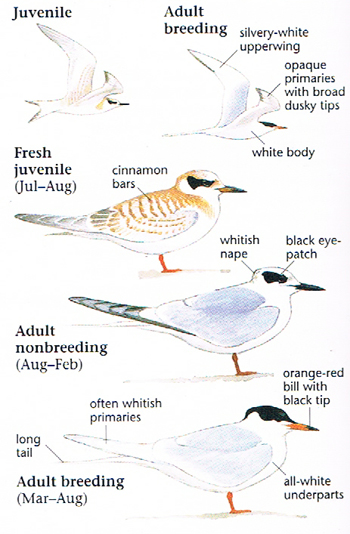
Photo taken from: The Sibley Field Guide by David Allen Sibley
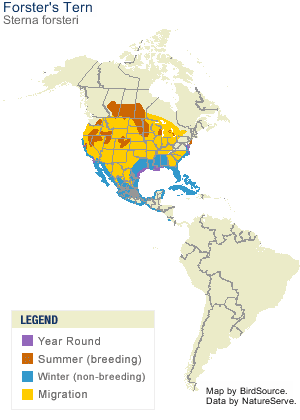
© 2003 Cornell Lab of Ornithology
|
Habitat |
|
|
Behavior |
|
Plunges into water from flight; may hover briefly before plunging. |
|
Food |
|
Small fish and arthropods. |
Taxonomy
| Kingdom: | Animalia |
| Phylum: | Chordata |
| Subphylum: | Vertebrata |
| Class: | Aves |
| Order: | Charadriiformes |
| Family: | Laridae |
| Subfamily: | Sterninae |
| Genus: | Sterna |
| Species: | Sterna forsteri |
Similar Species |
|
Common and Arctic terns have dark outer and white inner tail edges. |
|
Bird Sound |
|
Common call a descending "kerrr." Threat call a harsh "zaar." |
|
Eggs look like this |
|
Photo taken from: ARCTOS Collaborative Collection Management Solution |
